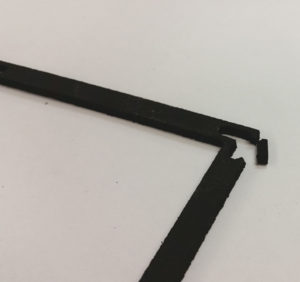Guest author: Mike Burris, Product Development - CGR Products
3 points For Processing Flexible Materials, to Think About
Since 1963, CGR Products has been manufacturing gaskets, rings, seals, and other engineered parts of industry-leading quality. Through the years, we’ve worked closely with design engineers and developed a deep understanding of working with different rubber and foam materials — including issues that tend to arise while using them.
In our experience, tolerances, shrinkage, and hole design are the three most common problems overlooked during the design phase. For this reason, we’ve explained some solutions to avoid these issues in the blog below.
 1. Tolerances That Are Too Tight
1. Tolerances That Are Too Tight
Engineers who work with rigid materials like plastic and metal more often than rubber products tend to request very tight tolerances. Metal manufacturing, however, is fundamentally different from sponge, foam, or rubber manufacturing.
Unlike metal, these materials are flexible, which is why they are used for gaskets and seals. However, their flexibility causes a certain amount of give during the manufacturing process, which in turn leads to tolerances slightly looser than those obtained through similar metalworking processes.
2. Shrinkage
Shrinkage is problematic for any part but is especially challenging with larger parts. As maintained by the Rubber Manufacturers Association (RMA), shrinkage can be expected, especially in sponge and foam products. Shrinkage is determined by cure temperature, fillers, and a number of other factors.
To help account for shrinkage, discuss the properties of your ideal materials with your rubber sheet manufacturer; an experienced manufacturer will be able to provide you with detailed shrinkage information and recommendations.
 3. Designs with Thin Flange Widths and Hole Placements
3. Designs with Thin Flange Widths and Hole Placements
All materials have limitations. This is as true for rigid metals and plastics as it is for foam, sponge, and rubber products. As with tolerances, though, design engineers more accustomed to working with rigid materials tend to overestimate the capabilities of flexible materials, often resulting in torn flanges and rips between holes.
This issue is worst in parts that feature bolt holes within flanges. When designed in parts to be made of flexible materials, bolt holes should straddle the flange’s centerlines, which should cut directly through the diameter of the holes.
Learn More
Luckily, all of these issues — and others that are common in sponge, foam, and rubber manufacturing scenarios — can be easily avoided or mitigated with careful design and consultation with your manufacturer.
For more information about rubber fabrication, including how to prevent other common issues, visit CGR’s website or download a comprehensive e-guide, “5 Common Design Mistakes and How to Avoid Them.”
